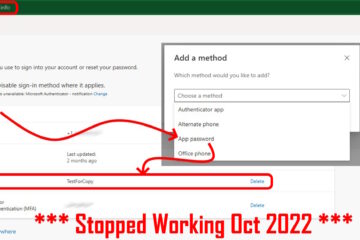Sales teams have always been an essential part of businesses, but the nature of this industry has changed significantly over the years. Today’s sales landscape is more competitive than ever, and more traditional sales methods are needed to keep up with the pace of modern business. That’s where automation comes in. Automation is revolutionizing the sector by providing new ways for companies to streamline their business processes, engage with customers, and close more deals.
By integrating with CRM (Customer Relationship Management) systems, sales automation tools can provide businesses with a comprehensive view of their customers and prospects, allowing them to deliver more personalized and effective sales experiences.
In this article, we’ll explore the benefits of automation in sales, how it works, and the role of CRM integrations in this niche. We’ll also take a closer look at an example of software and its features and the challenges and considerations involved in implementing sales automation. By the end of this article, you’ll better understand how automation is transforming sales and how it can help your business succeed in today’s competitive market.
The Benefits of Automation in Sales
Automation can benefit sales teams, including increased efficiency and productivity, better lead management and prioritization, improved customer engagement and experience, and data-driven insights and analytics. Here’s a closer look at each of these benefits:
Increased Efficiency and Productivity
Automation tools can streamline various sales processes, reducing the time and effort teams need to spend on tasks such as data entry, lead tracking, and follow-up. This can free up more time for sales reps to focus on high-value tasks such as building relationships with prospects and closing deals.
Better Lead Management and Prioritization
With automation tools, teams can more easily manage and prioritize leads based on lead source, engagement history, and likelihood to convert. This allows sales reps to focus their efforts on the most promising leads and improve their chances of success.
Improved Customer Engagement and Experience
Automation tools can help sales reps engage with prospects and customers in more personalized and effective ways, such as by sending targeted emails or social media messages based on the prospect’s interests or behaviour. This can help build stronger relationships with prospects and improve customer experience.
Data-Driven Insights and Analytics
Automation tools can provide sales teams with valuable data and insights, such as which tactics are most effective, which leads are most likely to convert, and which products or services are most popular with customers. This can help teams make more informed decisions and improve their overall performance.
How Automation Works In Sales
Sales automation tools typically use software, data, and algorithms to streamline and optimize various processes. Here’s a general overview of how automation works in sales:
Data Collection and Analysis
Automation tools first collect and analyze data from various sources such as CRM systems, social media, and email marketing platforms. This data may include information about leads, customers, sales history, and more.
Lead generation and management: Using the data collected, automation tools can help businesses identify and generate new leads and manage existing leads. This can include tasks such as lead scoring, lead nurturing, and lead segmentation.
Search and Outreach
Automation tools can also help businesses communicate with prospects and customers more efficiently and effectively. This may include sending automated emails or social media messages, scheduling follow-up calls, or using chatbots to provide instant customer support.
Automation tools have become an integral part of modern business operations, and another area where they are particularly useful is in finding leads. Lead generation is a critical aspect of any business, and automation tools can help streamline the process, making it faster and more efficient.
One such tool is SignalHire.com, a platform that allows businesses to find potential leads. SignalHire automates the lead generation process by using its extensive database of contact information to provide businesses with accurate and up-to-date contact details of potential customers. This tool saves businesses time and effort, allowing them to focus on other important aspects of their operations.
Analytics and Reporting
Automation tools can provide businesses with valuable data and insights about their sales performance, which can help them make data-driven decisions and optimize their strategies over time. Here are some of how automation tools can provide analytics and reporting:
- Conversion rates
- Open rates
- Click-through rates
- Sales pipeline metrics
One key aspect of automation in this sector is CRM integrations. By integrating with CRM systems, automation tools can provide businesses with a comprehensive view of their customers and prospects, allowing them to deliver more personalized and effective sales experiences. This can include tracking customer interactions, analyzing customer behaviour, and segmenting customers based on various criteria.
The Role of CRM Integrations in Sales Automation
Customer relationship management (CRM) systems are essential for businesses that want to manage customer interactions and improve their sales processes. By integrating CRM systems with such tools, companies can unlock even more benefits and further streamline their operations. Here are some of the key benefits of CRM integrations in sales automation:
- Data management: By integrating such tools with CRM systems, businesses can ensure that their data is accurate, consistent, and up-to-date. This can help sales teams stay organized and informed and help enterprises to make data-driven decisions based on their sales performance.
- Lead tracking: Such tools can help businesses generate and track leads more efficiently, but integrating these tools with CRM systems can take this process to the next level. By tracking leads in a CRM system, businesses can keep their customer and prospect data in one place, making it easier to manage and analyze.
- Workflow automation: Integrating such tools with CRM systems can also help businesses automate their workflows and processes. For example, businesses can use automation tools to automatically update their CRM systems when a lead takes a specific action, such as filling out a form or downloading a white paper.
Reporting and analytics: By integrating such tools with CRM systems, businesses can access more robust reporting and analytics capabilities. This can help companies to track their sales performance, identify trends and patterns, and make data-driven decisions to optimize their sales strategies.
Challenges and Considerations For Sales Automation
While sales automation can bring many benefits to businesses, it’s essential to consider some of the potential challenges and obstacles that may arise. Here are some of the key challenges and considerations for sales automation:
Customization and Personalization
One of the biggest challenges of this industry is ensuring that communications and interactions with customers still feel personalized and tailored to their needs. Businesses must find the right balance between automation and personalization to ensure their messages are effective and engaging.
Implementation and Adoption
Such tools can be a complex process that requires careful planning and coordination across multiple departments. Ensuring that teams are properly trained and motivated to use these tools is also crucial for successful adoption.
Data Privacy and Security
Sales automation tools often rely on large amounts of customer data to operate effectively. Businesses must ensure this data is adequately secured and protected to avoid data breaches or other security incidents.
Integration with existing systems: Integrating sales automation tools with existing systems, such as CRM or marketing automation tools, can be challenging. Ensuring that these systems are properly integrated and working together seamlessly is essential for successful sales automation.
Cost and ROI
Implementing such tools can be expensive, and businesses must carefully consider the cost-benefit ratio before investing. Ensuring sales automation tools provide a positive return on investment (ROI) is critical for long-term success.
Final Thoughts
In conclusion, sales automation is revolutionizing how businesses approach the sales process. By leveraging the power of automation tools, companies can streamline their operations, improve their efficiency, and drive better results over time. From lead generation and nurturing to sales forecasting and reporting, this industry’s tools can potentially transform every aspect of the sales process.
However, it’s important to remember that sales automation is not a one-size-fits-all solution. Businesses must carefully consider their specific needs and goals and the potential challenges and considerations associated with this niche before making an investment. By taking a thoughtful and strategic approach, businesses can maximize the benefits of these tools and achieve meaningful results over time.




1 Comment
How Conversational AI is Reshaping Customer Service In The Digital Age – Up & Running Technologies, Tech How To's · April 24, 2023 at 4:28 pm
[…] many are concerned about the effect of AI on employment, it’s clear that automation, machine learning, conversational AI, and technology, in general, can enhance the customer […]